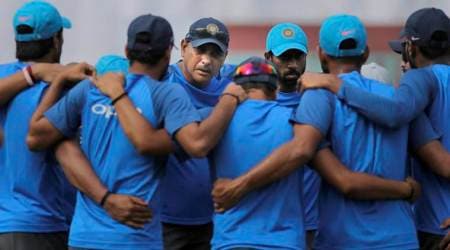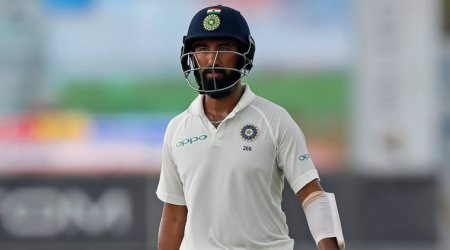 The window seats on the left give an unhindered view of the beautiful Sri Lankan coastline, a reason many tourists prefer the antiquated yet romantic locomotive than the expressway that connects the two cities. Express photos
The window seats on the left give an unhindered view of the beautiful Sri Lankan coastline, a reason many tourists prefer the antiquated yet romantic locomotive than the expressway that connects the two cities. Express photos
The colonial-style Galle railway station looks as antique as the fort itself. There are no computers or electronic screens. The tickets are thick Edmondson blocks with black ink spread over it. The groggy ticket checker punches the tickets before entering the platform, almost entirely invaded by tuk-tuk drivers, waiting for the 11’0 clock Colombo-Matara passenger. The yellow paint on the wall has begun to peel off. There is timeline of Celyon Railways in Sinhalese.
As the Colombo-bound express train arrives at the platform, the sleepy station suddenly wakes up into a jumble of multicoloured rucksacks and trolleys, a few hundred limbs in a teeming hurry to hop inside the train. The bargain is for a window seat on the left-side, which gives an unhindered view of the beautiful Sri Lankan coastline, a reason, in the first place, several tourists prefer the antiquated yet romantic locomotive than the expressway that connects the two diverse cities in less than two hours. It’s cheap as well — 180 Sri Lanka Rupees for a 130km-ride in the second-class carriage with free WiFi.
 The unfortunate aisle-seaters, still enthused , crane their necks and stretch their arms to not miss out.
The unfortunate aisle-seaters, still enthused , crane their necks and stretch their arms to not miss out.
The carriage is basic but comfortable, a welcome breeze wafts lazily through open windows, vendors amble up and down selling fruits, soft drinks, parippu vadai and chamili (tender coconut). It’s ostensibly crowded in the third class, often with passengers clinging to the side. There’s the occasional artiste too, his flute lilting into popular Sinhalese tunes, his enthusiasm peaking when the audience is European. But these are mere sideshows, the real lure is the sea. Everyone has their cameras, selfie-sticks and mobiles in tow, ready any moment to soak up the majesty of the beaches. The unfortunate aisle-seaters, still enthused , crane their necks and stretch their arms to not miss out.
Occasionally, as the train hoots and snakes along, you see a glimpse of the coastline and wonder whether it’s all about this, mere sneak-peaks. But not until the train calls at Ambalangoda and splutters past Kandegoda that sea reveals itself so tantalisigly close that you feel like jumping off the train. Thereafter it’s a clean white stretch, the wave lashing furiously at the rocks, the thin coastline empty. It fills the unaccustomed to a nervous joy, for a slip and you’ll be plunged into the depths. The best vantage point is the open doorway, but it’s a precarious adventure. They brake it so violently — like in Delhi buses — that it shakes the entire carriage.
Gradually, as the train breaks into Panadura, the topography changes. There’s still the rough sea and the craggy rocks, but there are more signs of human inhabitation as well. There are tiny palm-leaf thatched huts, boats resting (and rusting), kids waving at the train and the couples frolicking in the waves. Even the sea turns tranquil, as the train chugs along for several miles in a straight line, almost hugging the water, before it melts into urbanity.
The first sign of Colombo is the line of dilapidated huts and the stench of garbage piled up to be burned. It’s like when you enter any major station in India. The train calls at Colombo Fort, the penultimate stop. The station, unlike Galle, is a mangled mess of passengers in a rush. But, as they say, it’s about the journey and not the destination.

